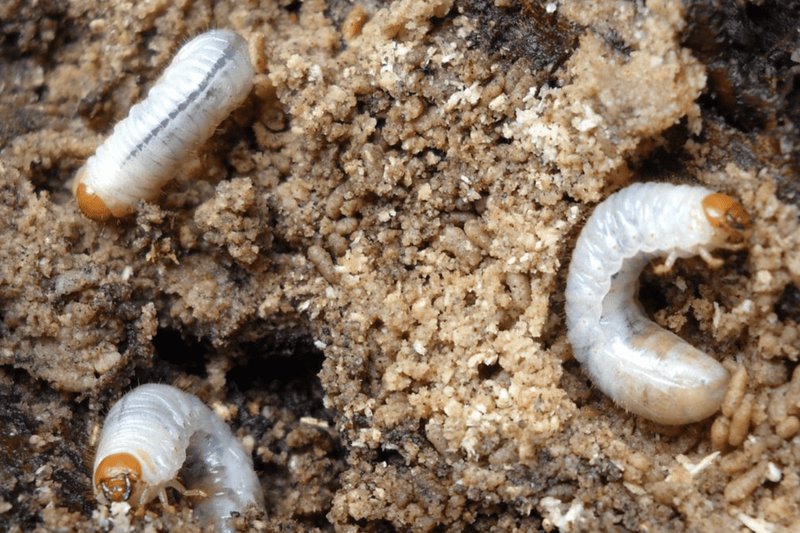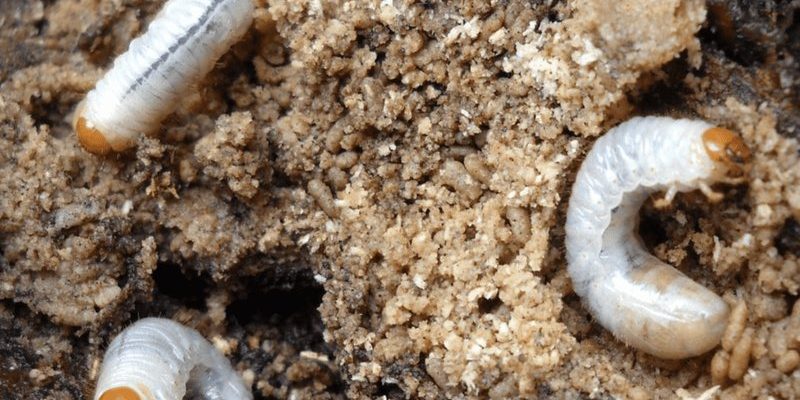
Grub worms are the larvae of various beetles, and while they are a natural part of the ecosystem, their presence can often lead to concerns among gardeners. It’s important to understand what grub worms are, why they show up in your flower beds, and how they might be affecting your plants. Let’s dive into the world of grub worms and see if they’re really as harmful as some folks say.
What Are Grub Worms?
Grub worms generally refer to the larvae of beetles, primarily the Japanese beetle, June beetle, and European chafer. These worms have a distinct shape, often looking like a “C” when curled up, and they can be white or cream-colored. They live underground and feast on the roots of grass and plants, which is why you might find them in your flower beds.
You might be thinking, “How do they even get there?” Well, female beetles lay their eggs in the soil, especially in areas with lush grass. When the larvae hatch, they start munching on the roots right away. This can lead to wilting plants and patches of dead grass, which isn’t the type of garden party you want to host.
The presence of these little critters isn’t entirely bad. They also play a role in the ecosystem by breaking down organic matter. Even so, their appetite can make them unwelcome guests in your flower beds.
How Do Grub Worms Affect Flower Beds?
Grub worms can have a significant impact on your flower beds, depending on their population and your plant types. As they snack on the roots, plants may struggle to take in essential nutrients and water. This can result in a few troubling symptoms:
- Wilting flowers: If your plants start drooping or losing their vibrant colors, it might be a sign that grub worms are doing a number on their roots.
- Stunted growth: Plant growth may slow down or even stop, leaving you with less-than-stellar blooms.
- Grass die-off: In lawns, grub damage can lead to patches of dead grass, making the area look unkempt.
It’s really a situation where the more grub worms you have, the more severe the damage can be. If you notice these symptoms, it’s essential to take action before your flower beds become a shadow of their former glory.
Signs of Grub Worm Infestation
You might be wondering how to tell if you have a grub worm problem in your flower beds. Here are some signs to watch for:
1. **Increased bird activity:** Birds love to snack on grubs. If you see more birds than usual in your garden, it could mean they’re feasting on grubs beneath the surface.
2. **Patchy or wilting plants:** As mentioned earlier, this is a telltale sign. If certain areas of your flower bed look less healthy, check for grubs.
3. **Soft or spongy soil:** When you step on your flower bed, does it feel squishy? This could indicate that the roots are damaged and not providing proper support.
4. **Visible grubs:** If you dig a little into the soil and see white, curled-up critters, you’ve got grubs!
Recognizing these signs early can help you take steps to manage the problem before it spirals out of control.
Managing Grub Worms in Your Flower Beds
If you discover grub worms in your flower beds, don’t panic! There are several ways to address the issue. Here are some tried-and-true methods to consider:
1. **Natural predators:** Encourage beneficial creatures like nematodes or birds to visit your garden. They naturally prey on grubs and can help bring down their population.
2. **Diatomaceous earth:** This natural powder can be sprinkled on the soil. It’s safe for plants and works by dehydrating grubs when they come into contact with it.
3. **Companion planting:** Certain plants can deter beetles from laying their eggs in your soil. Marigolds, for instance, are known to repel many pests.
4. **Insecticidal soap:** If the infestation is serious, you might consider using insecticidal soap. It’s a more gentle approach than chemical insecticides, reducing harm to nearby beneficial insects.
Using a combination of these methods not only addresses the current infestation but can help prevent future ones too.
Preventing Grub Worm Problems
Keeping grub worms at bay is often easier than dealing with an infestation. Here are a few preventive measures you can adopt:
– **Maintain healthy soil:** Healthy plants can withstand pest damage better. Regularly amend your soil with organic matter to keep it rich and vibrant.
– **Water deeply:** Instead of regular shallow watering, give plants a deep soak. This encourages roots to grow deeper, making them less accessible to grubs.
– **Rotate crops:** If you have a vegetable garden, rotating your plants can disrupt the life cycle of grubs and other pests.
– **Regular inspections:** Check your flower beds every now and then for signs of pests. Early detection can make a world of difference.
These simple steps can create a thriving garden, reducing the chances of grub worms turning your beautiful flower beds into a battleground.
When to Seek Professional Help
Sometimes, despite your best efforts, grub worms can become overwhelming. If you find that your methods aren’t making a dent, it might be time to consider professional help. Pest control experts can assess the situation, provide targeted treatment options, and help you find a long-term solution.
Always look for environmentally friendly options that align with your gardening values. You want to protect not just your flowers but also the surrounding ecosystem.
So, are grub worms harmful to flower beds? The answer is yes, they can be, but awareness and proactive measures can greatly reduce their impact. Recognizing the signs of infestation, employing natural and preventive methods, and seeking help when needed can keep your garden flourishing. Remember, a little vigilance goes a long way in ensuring your flower beds stay the vibrant, lively spaces you love. Keep an eye out, and don’t let these little pests ruin your gardening enjoyment!

